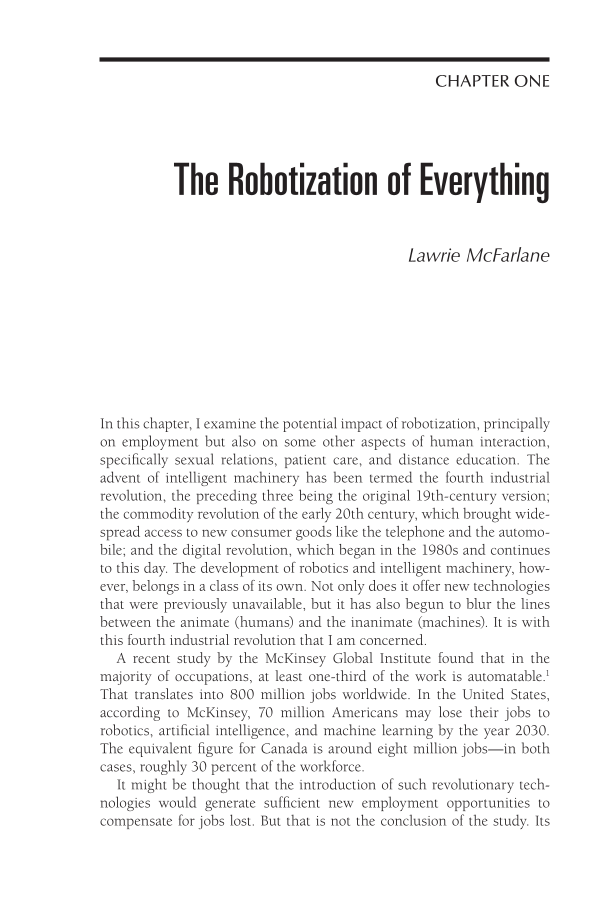CHAPTER ONE The Robotization of Everything Lawrie McFarlane In this chapter, I examine the potential impact of robotization, principally on employment but also on some other aspects of human interaction, specifically sexual relations, patient care, and distance education. The advent of intelligent machinery has been termed the fourth industrial revolution, the preceding three being the original 19th-century version the commodity revolution of the early 20th century, which brought wide- spread access to new consumer goods like the telephone and the automo- bile and the digital revolution, which began in the 1980s and continues to this day. The development of robotics and intelligent machinery, how- ever, belongs in a class of its own. Not only does it offer new technologies that were previously unavailable, but it has also begun to blur the lines between the animate (humans) and the inanimate (machines). It is with this fourth industrial revolution that I am concerned. A recent study by the McKinsey Global Institute found that in the majority of occupations, at least one-third of the work is automatable.1 That translates into 800 million jobs worldwide. In the United States, according to McKinsey, 70 million Americans may lose their jobs to robotics, artificial intelligence, and machine learning by the year 2030. The equivalent figure for Canada is around eight million jobs—in both cases, roughly 30 percent of the workforce. It might be thought that the introduction of such revolutionary tech- nologies would generate sufficient new employment opportunities to compensate for jobs lost. But that is not the conclusion of the study. Its
Document Details My Account Print multiple pages
Print
You have printed 0 times in the last 24 hours.
Your print count will reset on at .
You may print 0 more time(s) before then.
You may print a maximum of 0 pages at a time.


















































































































































































